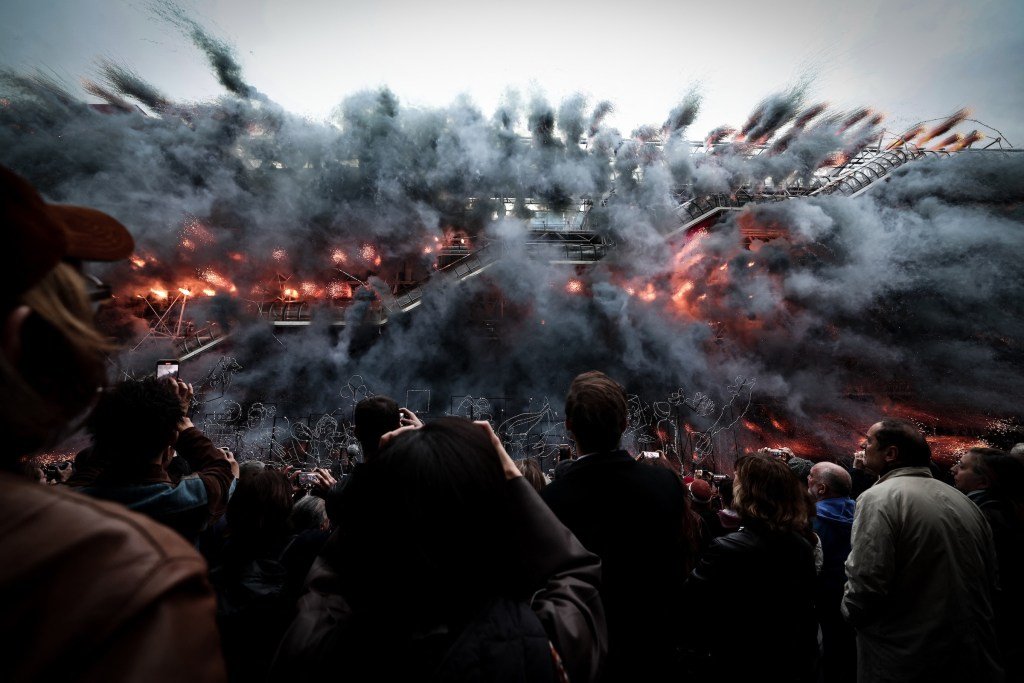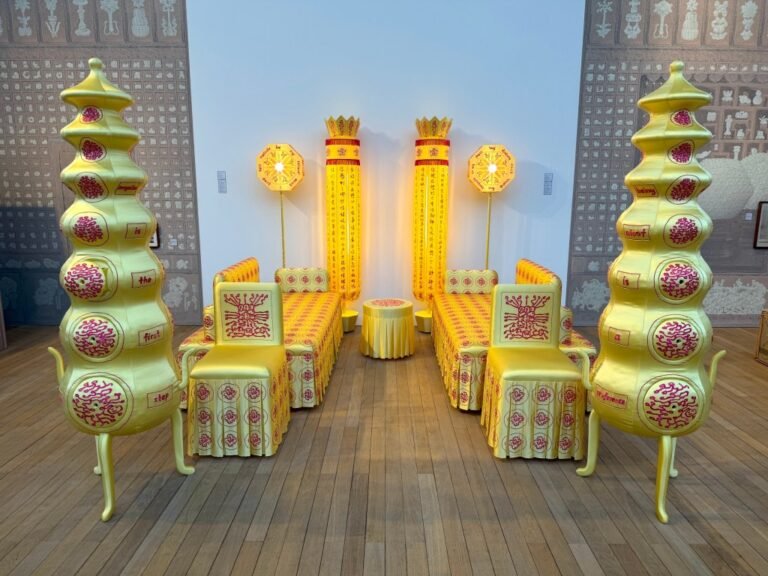

A dozen demonstrators gathered outside the Centre Pompidou in Paris on Wednesday, October 22, to protest a fireworks performance by Cai Guo-Qiang and call for a boycott over his controversial stunt in the Himalayas earlier this year.
The daytime fireworks show by the Chinese artist, titled “Le Dernier Carnival” (“The Last Carnival”), was staged to mark the museum’s five-year closure for renovations. Organized in collaboration with White Cube gallery during Paris Art Week, Cai transformed the Pompidou’s façade into a fleeting, monumental painting, using his custom-built AI model to fuse art, technology, and pyrotechnics.
Cai’s destructive spectacles have often sparked controversy. His 2024 Los Angeles show caused distress among residents due to loud explosions, falling debris, and a blanket of smoke. The backlash escalated after Cai was commissioned by the outdoor brand Arc’teryx to stage a fireworks display titled “Rising Dragon” at an altitude of 18,000 feet on a mountain ridge in the Tibetan Himalayas this September. Despite the Canadian-founded and now Chinese-owned company’s claims that “biodegradable materials” were used and livestock relocated, the show was accused of causing damage to the vulnerable high-altitude ecosystem. Four Chinese officials were dismissed as a result.
“Tibet is not a stage for corporate spectacle,” said Students for a Free Tibet (SFT) France, the group behind the Pompidou demonstration, in an email to Hyperallergic.
“What took place in Shigatse, Tibet, was not art, it was exploitation,” the group continued. “China’s occupation of Tibet continues to wreak havoc on Tibet’s fragile ecosystem. And by detonating over a thousand explosives on Tibet’s sacred land, Arc’teryx and Cai Guo-Qiang showed a deep disregard for Tibet’s fragile environment and its people.”

The stunt ignited global outrage, particularly among Tibetan communities, who viewed it as a profound act of disrespect toward sacred mountains and local traditions, framing it as an indefensible act of cultural violence.
Arc’teryx issued an apology on Instagram, pledging to collaborate with Cai and their “team in China” to address the project’s “environmental and social impacts”. Cai also apologized on his studio’s WeChat account, acknowledging “oversights” in the project’s execution, while Chinese central government launched an investigation.
Hyperallergic has contacted Arc’teryx, Cai Guo-Qiang, White Cube Gallery, and Centre Pompidou for comment.

Since then, Tibetan activists from Students for a Free Tibet and allied advocacy groups have staged demonstrations at multiple Cai performances. Alongside this week’s protest at the Centre Pompidou, activists gathered outside White Cube London on September 25, chanting “Chinese art, Tibetan destruction!”
In response to the London protests, action group Free Tibet said in a statement: “Art must never be used to mask injustice or celebrate the destruction of a repressed culture.”
Activists argue that Cai’s fireworks commodify Tibetan culture and spirituality, turning sacred spaces into marketing spectacles. “Tibet is not a setting and spirituality is not a marketing product,” SFT France said an Instagram post after the Pompidou action. “Art cannot be an excuse to destroy.”

Groups have also staged protests at other Paris museums, drawing attention to what they see as the erasure of Tibetan identity and heritage in major cultural institutions. Earlier this year, four pro-Tibetan groups in France filed a legal complaint against the Musée Guimet over the renaming of its Nepal-Tibetan galleries to the more generic “Himalayan World.” Activists argue the move effectively erases the existence of Tibet, aligning with China’s broader efforts to suppress Tibetan culture, history, and political identity.
Last year, protests erupted when the Musée du Quai Branly in Paris labeled its Tibetan artifact collection as hailing from the “Xizang Autonomous Region,” adopting a term used by the Chinese government in place of the more widely recognized “Tibet.”
“We believe that true art uplifts, it does not destroy,” SFT France told Hyperallergic. “By offering its platform to Cai Guo-Qiang, the Centre Pompidou and White Cube are complicit of this environmental and colonial vandalism.”
Tashi Lahmu, national coordinator for Voluntary Tibet Advocacy Group UK, added: “We will continue to be a voice for those voiceless inside Tibet.”



